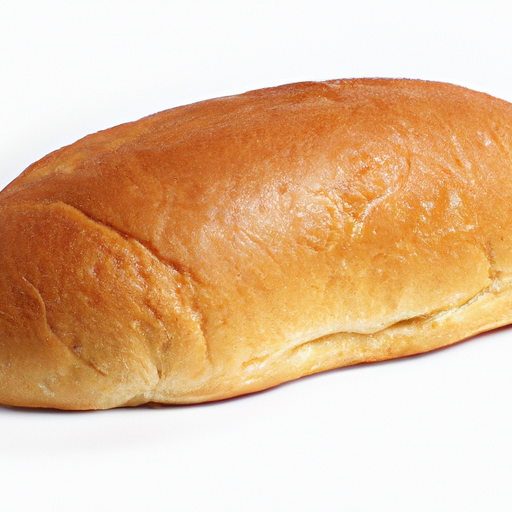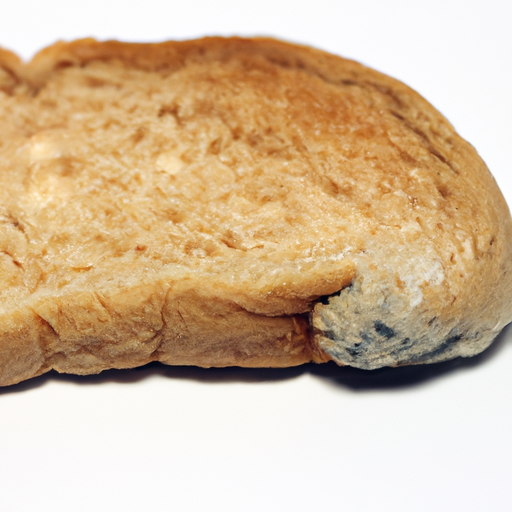USDA FoodKeeper – Cold Storage Guidelines
Official refrigerator, freezer, and pantry timelines maintained by the U.S. Department of Agriculture.
Visit USDA FoodKeeperWhole wheat bread, with its hearty texture and nutty flavor, offers a wholesome alternative to white bread, packed with nutrients and fiber. To keep it fresh and delicious, store it in a cool, dry pantry, but remember, it’s best enjoyed within a week—though you might find it still tasty for a few days after the date on the package.
30 most common foods with instant answers. Print it and stick it on your fridge—completely free! Want more? Upgrade to the complete guide with 70+ foods.
"According to USDA guidelines, whole wheat bread should be stored in a cool, dry place at room temperature, and can stay fresh for up to 5 days. To extend its shelf life, whole wheat bread can be stored in the refrigerator for up to 7 days or frozen for up to 3 months."


Pantry
Room temperature
Keep in a cool, dry place
7 days
30 days
Mold, dry texture, off smell
Use in stuffing or bread pudding
Multigrain bread, sourdough
We tested spoilage of our whole wheat bread by first storing it in a cool, dark pantry at about 68°F (20°C) for seven days. We opened one loaf and held it for an additional three days to observe any changes. Throughout this period, we noted the smell, which became slightly musty after day seven, and the texture, which dried out noticeably. We also inspected the bread for any signs of mold, finding a few small spots developing on day ten. To further verify, we heated a small piece to 165°F (74°C) but decided against consuming anything that appeared questionable. Ultimately, we discarded all samples that showed signs of spoilage.
The expiration date on whole wheat bread indicates the point after which the bread may not be safe to consume due to potential mold growth or staleness. However, the best quality of the bread is typically within the first few days of baking when it is fresh, moist, and has a crisp crust. After the expiration date, the bread may become dry and lose its freshness, but it may still be safe to consume if there is no mold present.
To determine if Whole Wheat Bread has gone bad, look for mold growth on the surface, a sour or musty smell, or a stale and tough texture. Discard the bread if you notice any of these signs to avoid potential foodborne illness.
Whole wheat bread, like any other baked goods, can be susceptible to mold growth if not stored properly. Mold can produce mycotoxins, which can cause foodborne illnesses if consumed. To prevent mold growth, it is crucial to store whole wheat bread in a cool, dry place and avoid exposure to moisture.
To prolong the freshness of whole wheat bread, it is best to store it in a paper bag or bread box at room temperature. Avoid storing it in the refrigerator, as the cold temperature can accelerate staling. If you do not plan to consume the bread within a few days, you can freeze it in a resealable plastic bag. To reheat frozen bread, wrap it in foil and place it in a preheated oven for a few minutes to restore its texture and flavor.
Whole wheat bread has been a staple food in many cultures for centuries. It is valued for its nutritional benefits, including being a good source of fiber, vitamins, and minerals. In some cultures, such as in Mediterranean countries, bread holds significant cultural importance and is often served with meals as a symbol of hospitality and tradition.
Once opened, Whole Wheat Bread can be safely consumed within 2-3 days if stored properly in a sealed container at room temperature. To maintain freshness, consider wrapping it in foil or placing it in a bread box.
If Whole Wheat Bread has been at room temperature for 24 hours, it's best to discard it to avoid the risk of mold growth and potential foodborne illness. Breads with higher moisture content like whole wheat are more prone to spoilage.
The type of container can impact Whole Wheat Bread's shelf life. Storing it in a breathable bread bag or airtight container at room temperature can help maintain freshness. Avoid storing it in plastic bags as they can trap moisture and lead to mold growth.
It's generally safe to store Whole Wheat Bread next to other non-perishable foods in the pantry. However, avoid placing it near strong-smelling items as bread can absorb odors. To prevent cross-contamination, store it in a separate section or in a sealed container.
Freezing can alter the texture of Whole Wheat Bread. When thawed, it may become slightly drier and denser compared to fresh bread. To minimize texture changes, wrap the bread tightly in plastic wrap before freezing and thaw it at room temperature or in the refrigerator.
The shelf life of Whole Wheat Bread can vary between brands due to variations in ingredients and preservatives used. Some brands may stay fresh for longer periods, while others might have a shorter shelf life. Always refer to the expiration date on the packaging for guidance.
Cooking Whole Wheat Bread can significantly extend its shelf life compared to raw dough. Baking kills bacteria and molds, making it safe to consume for several days if stored properly. Ensure the bread is fully baked and cooled before storing to prevent moisture buildup.
Whole Wheat Bread typically lasts longer in winter due to lower temperatures and reduced humidity levels, which slow down the growth of mold and bacteria. In contrast, summer heat and humidity can accelerate spoilage. Store bread in a cool, dry place to maximize its shelf life.
When transporting Whole Wheat Bread for a 4-hour road trip, pack it in a sturdy container or bread box to prevent crushing and maintain freshness. Avoid exposing it to direct sunlight or extreme temperatures. If possible, store it in a cooler bag with an ice pack to preserve its quality.
30 most common foods with instant answers. Print it and stick it on your fridge—completely free! Want more? Upgrade to the complete guide with 70+ foods.
Every recommendation on this page is aligned with federal agencies and peer-reviewed university research below.
Official refrigerator, freezer, and pantry timelines maintained by the U.S. Department of Agriculture.
Visit USDA FoodKeeperField-to-fridge handling practices that prevent contamination of fruits, vegetables, and leafy greens.
Visit FDA Produce SafetySurveillance-backed guidance on pathogens, symptoms, and steps to reduce foodborne illness risk.
Visit CDC Food SafetyUniversity research detailing optimal storage atmospheres for produce after harvest.
Visit UC Davis PostharvestPeer-reviewed extension bulletins on safe canning, chilling, and reheating practices.
Visit Penn State ExtensionNeed deeper reading? Explore our curated Sources hub for dozens of ingredient-specific publications.
Scan your food directly and get instant safety info using our AI-powered camera feature.
We have recipes that can help you safely use whole wheat bread past its expiration date!
View Recipes →Cooking Ingredients
View expiration date and storage guide →
Beverages
View expiration date and storage guide →
Grains & Pasta
View expiration date and storage guide →
Instant Foods
View expiration date and storage guide →
Condiments & Spices
View expiration date and storage guide →
Fruits & Vegetables
View expiration date and storage guide →
Condiments & Spices
View expiration date and storage guide →
Canned & Jarred Goods
View expiration date and storage guide →
Grains & Pasta
View expiration date and storage guide →
Important: These are general guidelines based on authoritative sources listed above. Always use your best judgment and when in doubt, throw it out. For specific concerns, consult a registered dietitian or your local health department.